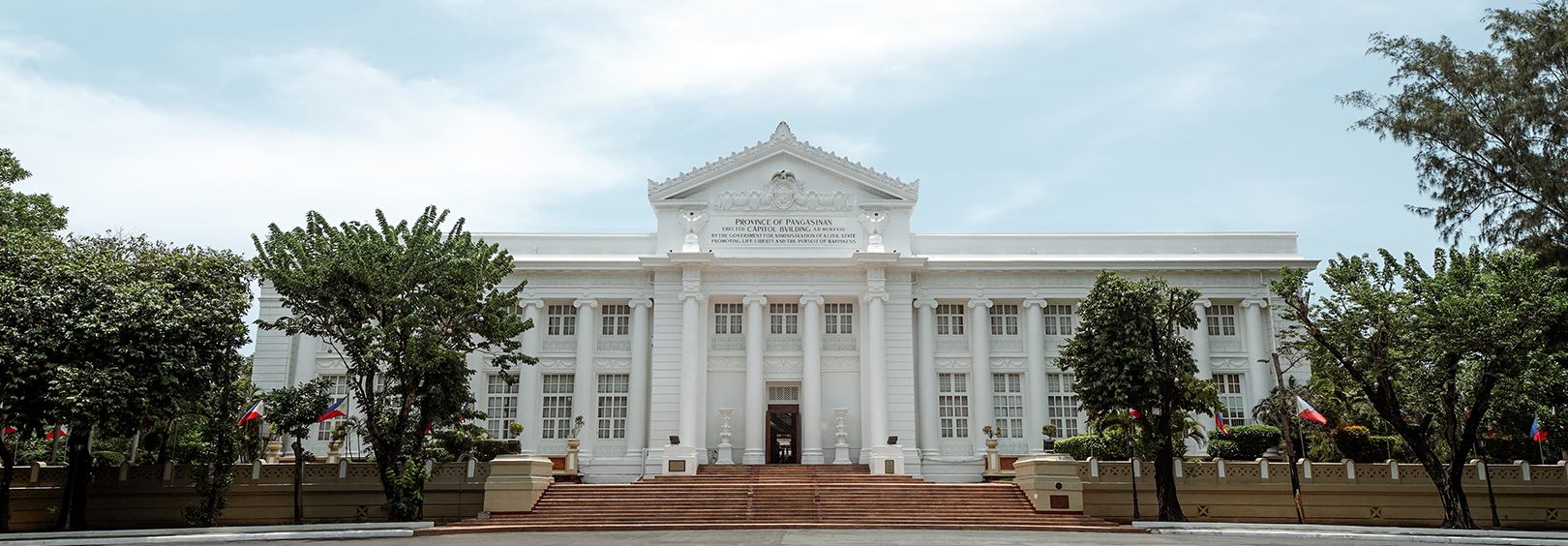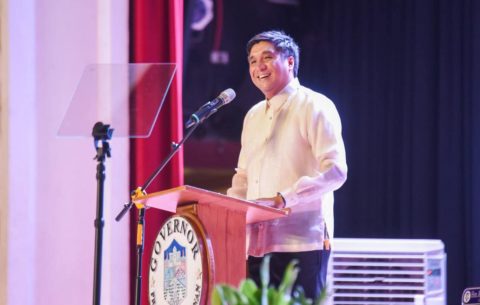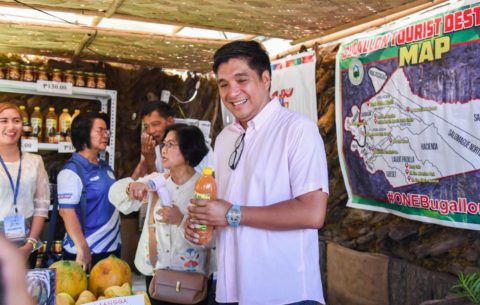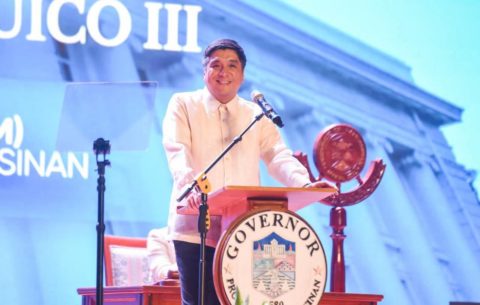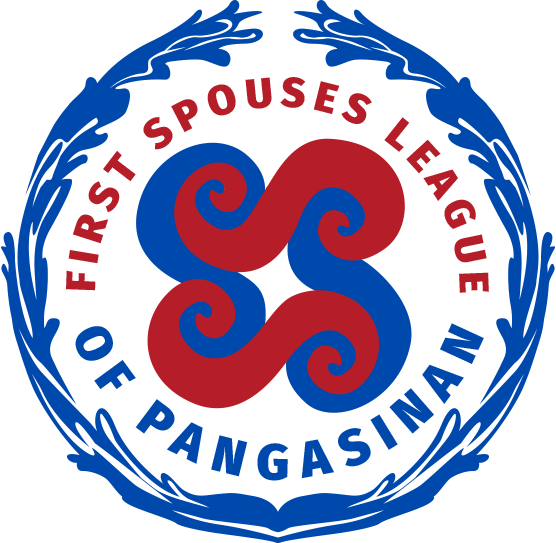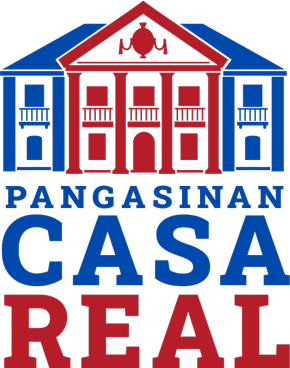Pangasinan’s colorful history dates back to 1571 when it was officially conquered and colonized by D. Martin de Goiti. It was on April 5, 1572, when it was made an encomienda, an institution where groups of indigenous people were legally entrusted to a Spanish conqueror with the duty of paying him labor or tribute.
Fast-forward to 1580, Pangasinan became a political entity with an “alkalde mayor” leading the province’s affairs. However, the most crucial milestone in its history was April 5, 1580, recognized as Pangasinan’s official founding day.
Significant Dates
Long before the arrival of the Spaniards, the Ancient Malayo-Polynesians of the Austronesian stock sailed by boat and established settlements along the Lingayen Gulf. These settlers were skilled in salt-making and named their new home Pangasinan, which means “the place where salt is made.” This name specifically referred to the coastal region, while the inland areas were collectively known as “Caboloan,” due to the abundance of a small bamboo species called “bolo” in that area. The people of Pangasinan engaged in trade with India, China, and Japan as early as the 8th century A.D.
In 1572, Juan de Salcedo received orders from his grandfather Governor General Miguel Lopez de Legazpi to explore and bring stability to northern Luzon. He led an expedition that took him to Pangasinan, which was later credited by Spanish priest-historian Fray Juan Ferrando as being discovered by Salcedo. On April 5, the province came under Spanish jurisdiction as an encomienda.
In the years 1574 to 1575, the Chinese corsair Limahong, having faced defeat by the Spaniards in his attempt to establish a colony in Manila, sought refuge in Pangasinan where he established his own small kingdom. Accompanying Limahong were men, women, and children who formed his party. Through coercion, he compelled the local inhabitants to provide provisions and serve his group.
In response to the situation, Juan de Salcedo took charge and led the pursuit of Limahong. Despite months of blockading, Limahong and his forces managed to escape through a channel they had dug out into the China Sea, thus evading Salcedo’s pursuit in August 1575. Notably, many of Limahong’s followers, along with their families, decided to stay in Lingayen even after he left. In 1580, Pangasinan was established as an alcaldia mayor or province by Governor General Gonzalo Ronquillo de Peñalosa, and Don Pedro Manrique became its first alcalde mayor.
The superior government officially defined the territorial boundaries of Pangasinan in 1611. This was a crucial step towards establishing a functional political subdivision, which required a well-defined geographical area, a designated administration, and a populace adhering to the law.
The newly formed province included all the coastal villages called “Pangasinan” and the inland regions known as “Caboloan.” The boundaries of the province extended from San Juan, now located in La Union, in the north to the foothills of the Cordillera and Caraballo mountains in the northeast and east. The southern boundary reached Paniqui, and the western extent included the present area of Sual town and even part of what we now know as Zambales.
In 1660, the Malong Revolt took place, led by Andres Malong from Binalatongan (modern-day San Carlos City). This rebellion involved the Filipinos rising against Spanish rule. The revolt was partly motivated by the temporary occupation of Manila by the Dutch, which encouraged local resistance.
During this revolt, Andres Malong proclaimed himself as the leader or “Ari,” and the Filipinos asserted their independence. Unfortunately, this declaration was brief as the Spanish military swiftly put down the uprising in under a month. Despite the initial boost provided by the Dutch, the Spanish government managed to quash the revolt and maintain its authority in the area.
The Palaris Revolt, led by Juan dela Cruz Palaris of Binalatongan, erupted in 1762 due to the locals’ resentment towards paying tributes to the Spanish authorities. The rebellion gained momentum after the Spanish army’s defeat and the British takeover of Manila. As a result of their escalated demands, the Spanish were driven out of the central town of Lingayen.
For two years, the rebels and their allies held power and autonomy in the Spanish government of the province. Nevertheless, when Juan dela Cruz Palaris was captured, the rebellion came to a close. To put the tumultuous events behind them, Spanish officials renamed the town of “Binalatongan” to “San Carlos” in honor of the ruling monarch at that time, Charles III. It’s believed that the renaming was a symbolic act to reassert Spanish control and honor the end of the revolt.
The year 1840 saw a major milestone with the construction of the Casa Real, also known as the Royal House, in Lingayen. This impressive structure, spanning over 1,700 square meters, was built using stone and bricks. It functioned as the Provincial Capitol, where the Alcalde Mayor, or Provincial Mayor, resided and carried out official business.
The Casa Real has been a significant part of Pangasinan’s history, serving as a witness and host to various historic events. It was later utilized as a “Juzgado,” a term often used to refer to a courthouse or judicial center. Due to its rich history and central location within the province, the Casa Real became a hub for administrative, judicial, and historical activities.
Sual was designated as an official port for foreign trade by the Spanish government in 1855. This allowed the town to participate in international trade, specifically exporting rice to destinations like China and Macao. Sual also played an important role in shipbuilding in the Philippines, along with other centers like Labrador, Lingayen, and Dagupan, serving as a central hub for constructing ships.
On December 27, 1897, General Emilio Aguinaldo, as well as Spanish Governor-General Primo de Rivera and other individuals, took a train from an unspecified location to reach the Dagupan terminal. They then continued their journey to Sual, where they boarded the S.S. Uranus. This ship was designated to transport General Aguinaldo into exile in Hong Kong, as part of the terms of the Pact of Biak-na-Bato. This significant agreement aimed to temporarily end the Philippine Revolution and bring about a truce between the Philippine revolutionary forces and the Spanish colonial authorities.
A Katipunan board was established in Pangasinan on July 22, 1898, with General Francisco Makabulos from Central Luzon providing guidance. Don Daniel Maramba from Sta. Barbara, Vicente del Prado from San Jacinto, Juan Quesada, and Eliseo Arzadon from Dagupan led the local board.
In a pivotal battle, the forces led by this local board of Katipunan defeated the remaining Spanish forces that had taken a last stand in Dagupan. Following this victory, they proceeded to reenact the proclamation of independence that had been originally declared in Kawit 40 days earlier. This event marked the liberation of Pangasinan from Spanish colonial rule and aligned the region with the broader momentum of the Philippine Revolution towards achieving independence.
President Emilio Aguinaldo acted on February 5, 1899, one day after the start of the Philippine-American War, due to the risk of a coastal invasion by American forces. He instructed Pangasinan Governor Quesada to move the provincial capital from Lingayen to San Carlos for safety reasons.
This strategic move aimed to safeguard the province from the looming danger presented by American troops, as Lingayen was situated directly along the Gulf and vulnerable to coastal attacks. San Carlos was selected as a more defensible location to serve as the provincial capital during this challenging period.
Consequently, from February 5, 1899, until the fall of the Republican forces in Pangasinan in November of the same year, San Carlos functioned as the provincial capital. This relocation reflected the urgent need to protect the province from the imminent threat posed by American forces during the early stages of the Philippine-American War.
In a certain barrio in Bayambang, Jose Palma, a staff member of the revolutionary government’s newspaper La Independencia, writes a poem that becomes the lyrics for the melody of the “La Marcha Nacional Filipina” composed by Julian Felipe. This poem was translated later to Filipino and given the title “Lupang Hinirang” which is now the Philippine National Anthem. It was written in the house of Doña Romana G. vda de Favis. This house served as the “Malacañang” of the Aguinaldo Republic momentarily in November 1899. (The said barrio is now part of Bautista town. The town gained its municipal status in 1900 and gained its stature as the ‘Home of the Lupang Hinirang.)
When the Philippine-American War reached Pangasinan in early November of the year 1899, General Emilio Aguinaldo, the president of the first Philippine Republic, transferred the seat of his government to Bayambang and it momentarily became the capital of the republic. The Council of Government also convenes for the last time in Bayambang, in which meeting it was finally decided to disband the army and resort instead to guerilla warfare. The formal workings of the central government of the first Philippine Republic thus ended in Bayambang.
On November 20, 1899, the columns led by General Arthur MacArthur and Henry Ware Lawton successfully connected with Loyd Wheaton’s column in Dagupan. This link-up marked the conclusion of overt warfare in Pangasinan and signaled the completion of the American conquest of the province.
Military administrators were promptly installed to assume control and governance in the newly conquered territory. This transition from active warfare to the establishment of military administration marked a crucial phase in the American occupation of Pangasinan and the wider Philippines during the Philippine-American War.
During a general assembly held in Dagupan on February 16, 1901, the Taft Commission established Pangasinan as a civil province and appointed Don Perfecto Sison of Lingayen as Governor. After careful consideration, Lingayen was chosen as the capital due to the presence of Casa Real in the area, over Dagupan. Taft and his commissioners were warmly welcomed and received a grand reception at the Casa Real.
In September 1902, the first public secondary school in Pangasinan was established in Lingayen, with several US “Thomasites” serving as educators. Until 1946, the Pangasinan Academic High School was the sole public secondary school in the province. It was later renamed as the Pangasinan National High School and has since produced numerous prominent figures in the region.
Governor Daniel Maramba spearheaded the celebrations in February 1919 to mark the opening of the new Capitol. The festivities included an agricultural and industrial fair, carnival, parades, and a grand coronation ball where a queen and her court were crowned. The neo-classical building was designed by American architect, Ralph Doane.
On December 22, 1941, Pangasinan was drawn into World War II. The United States Army Forces in the Far East (USAFFE) and the Japanese army engaged in fierce combat around Pozorrubio, Binalonan, and Tayug. Eventually, the USAFFE retreated to Bataan, and the Japanese military took over Pangasinan, beginning a two-year invasion. The people endured great suffering during this time.
In order to work towards restoring peace and promoting the welfare of the people, Dr. Santiago Estrada resumed the governorship of the province after evacuating the provincial office to Tayug. He reorganized the provincial government and cooperated with the occupation forces through the Japanese Military Administration. As part of the new Japanese-sponsored national government, Dagupan was selected as the provincial capital.
From January 9-13, 1945, the Allied Forces, including the United States Sixth Army led by General Walter Krueger, successfully landed on the beaches of Lingayen, Binmaley, Dagupan, Mangaldan, and San Fabian without any opposition. This marked the beginning of the liberation of Pangasinan. Only four days later, Gen. Douglas MacArthur arrived and landed behind the ruined Capitol building. He also established his Luzon headquarters in Dagupan.
In February 1945, the Philippine Civil Affairs Unit (PCAU), which was made up of Americans, helped to restore the provincial government. They appointed Sofronio Quimson as Governor and kept Dagupan as the capital city. However, in June of that same year, the capital city was moved back to Lingayen. The US government also supported the provincial government, under Governor Enrique Braganza, in rebuilding damaged buildings, including the Provincial Capitol, with the help of the Philippine Rehabilitation Act a year later.
The construction of the official residence and guest house for Governor Juan de Guzman Rodriguez was started in 1953. It was named “Princess Urduja Palace” after the mythical leader of the 14th-century Amazon tribe in pre-colonial Pangasinan.
Moving forward post-EDSA, Fidel V. Ramos, a pure-blooded Pangasinense, was elected as the President of the Republic of the Philippines on June 30, 1992. One of his notable accomplishments, which still benefits Pangasinan today, was his success in attracting foreign investors to establish the Sual Power Plant, which helped alleviate the power crisis during his term, as well as the construction of the San Roque Dam.
The San Roque Multipurpose Project, or SRMP for short, was built in San Manuel and San Nicolas in 1998. The project’s aim was to make use of the Agno River’s power, which is the third-largest river in the country. When the project is properly operated and maintained, it provides numerous advantages to the Luzon region’s communities, such as flood control, irrigation, electrical power, and better water quality.
The following year marked the beginning of operations for the Sual Coal-Fired Power Plant. Located in Brgy. Pangascasan, Sual, Pangasinan, this plant stands as the largest and most efficient coal-fired power facility in the Philippines. It serves the Luzon grid with a generating capacity of 1,218 MW. The company holds an Energy Conversion Agreement with the National Power Corporation under a 25-year build-operate-transfer scheme (BOT).
In May 2022, the 31st Governor of Pangasinan was proclaimed. Governor Ramon “Mon-Mon” V. Guico III won over his opponent with 885,272 votes, ushering in a new era of progress for the province.
References:
Basa, R. (2006, August 11). From the Saltbeds. People’s Digest and Forum.
Callejas, A. H. S. (2005, August 26). Nota Informativa, Seccion de Filipinas.
Callanta, C. V. (1989). The Limahong Invasion. New Day Publishers.
Cortez, R. M. (1990a). Pangasinan 1572-1800. New Day Publishers.
Cortez, R. M. (1990b). Pangasinan 1901-1986: A Political, Socioeconomic and Cultural History. New Day Publishers.
Cortez, R. M. (1990c). Pangasinan 1801-1900: The Beginnings of Modernization. New Day Publishers.
MUHON: A Journal of Architecture, Landscape Architecture and the Designed Environment. (University of the Philippines College of Architecture). Issue No. 3.
Quintos, F. (1926). Sipi Awaray Gelew Diad Pilipinas (Revolucion Filipina). Gumawid Press.
Williams, D. R. (1913). The Odyssey of the Philippine Commission (Vol. 3). A. C. McClurg & Co. (Digitized by Google).


